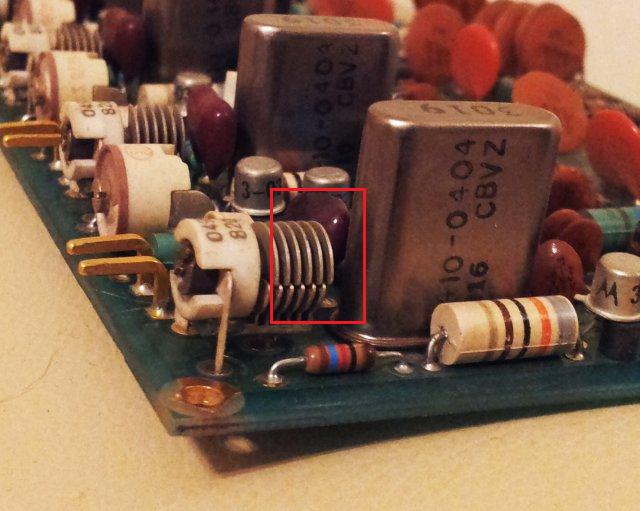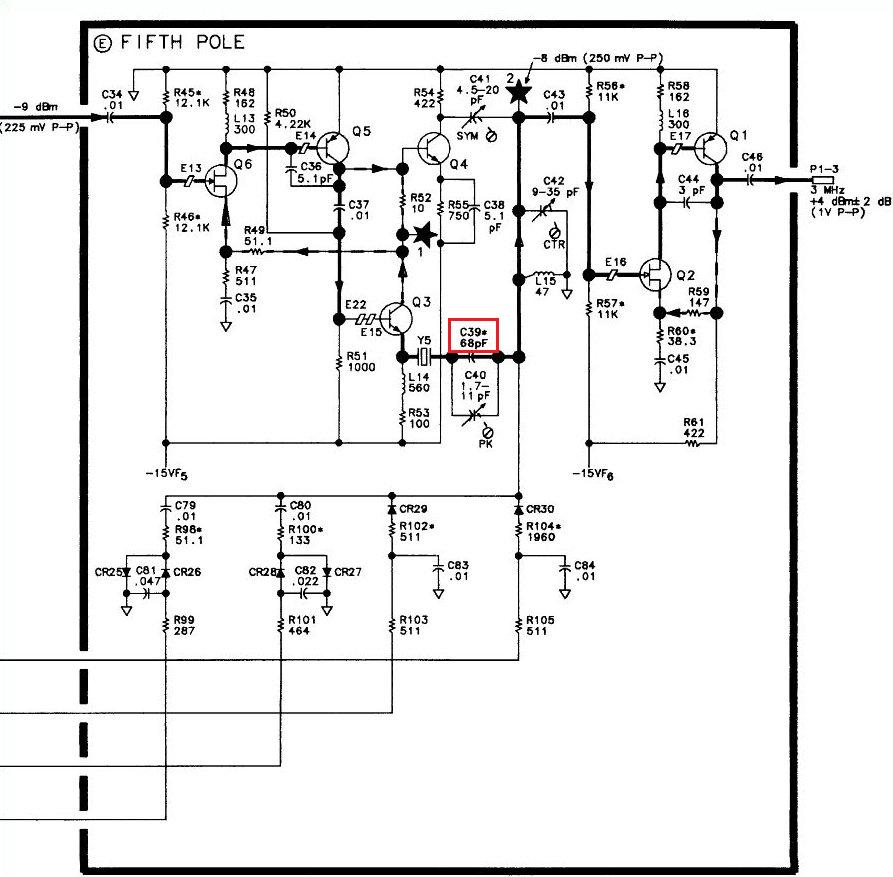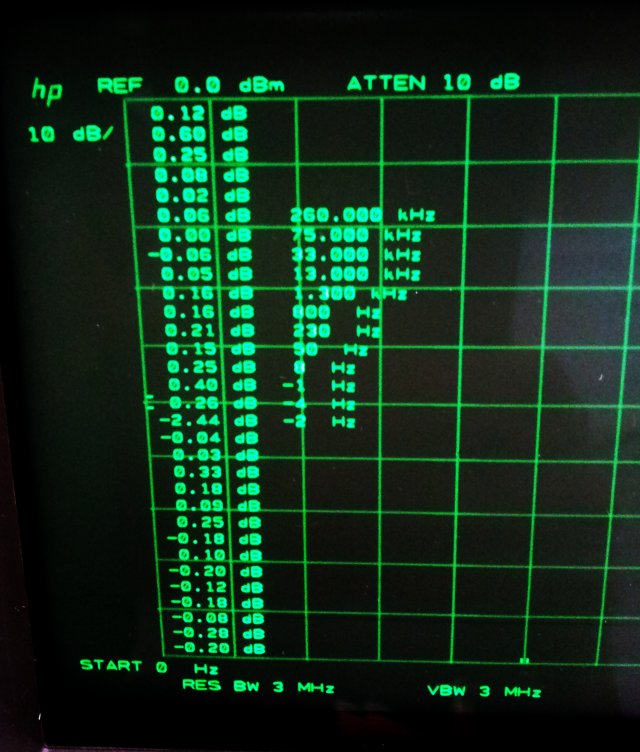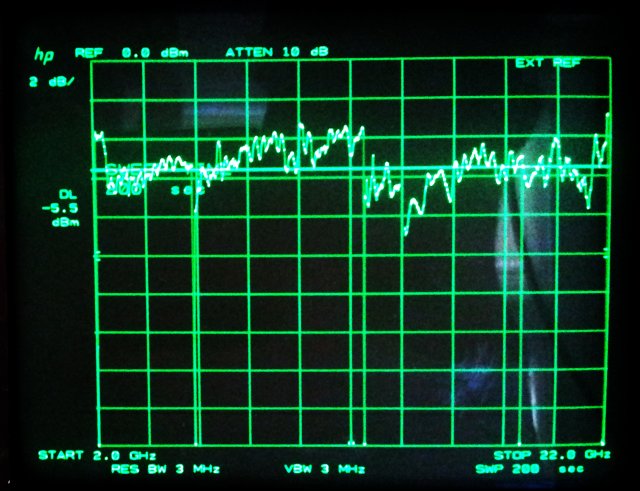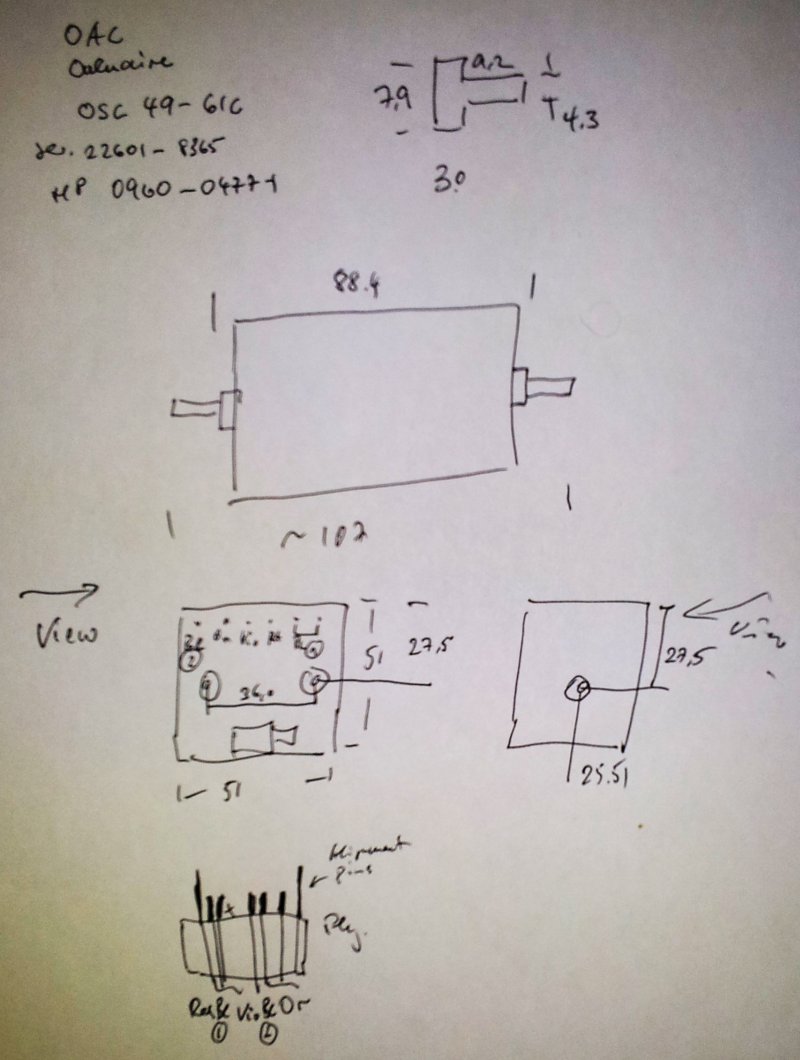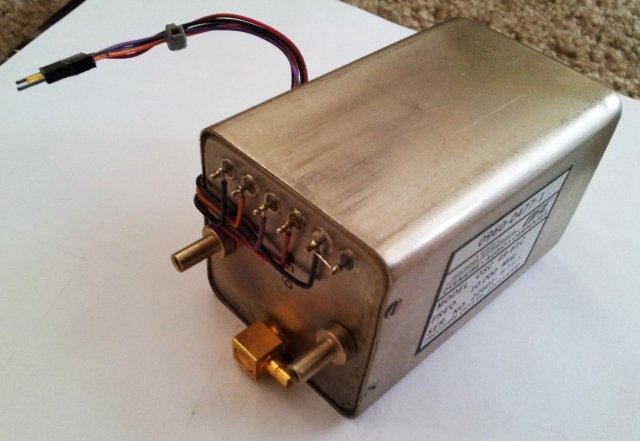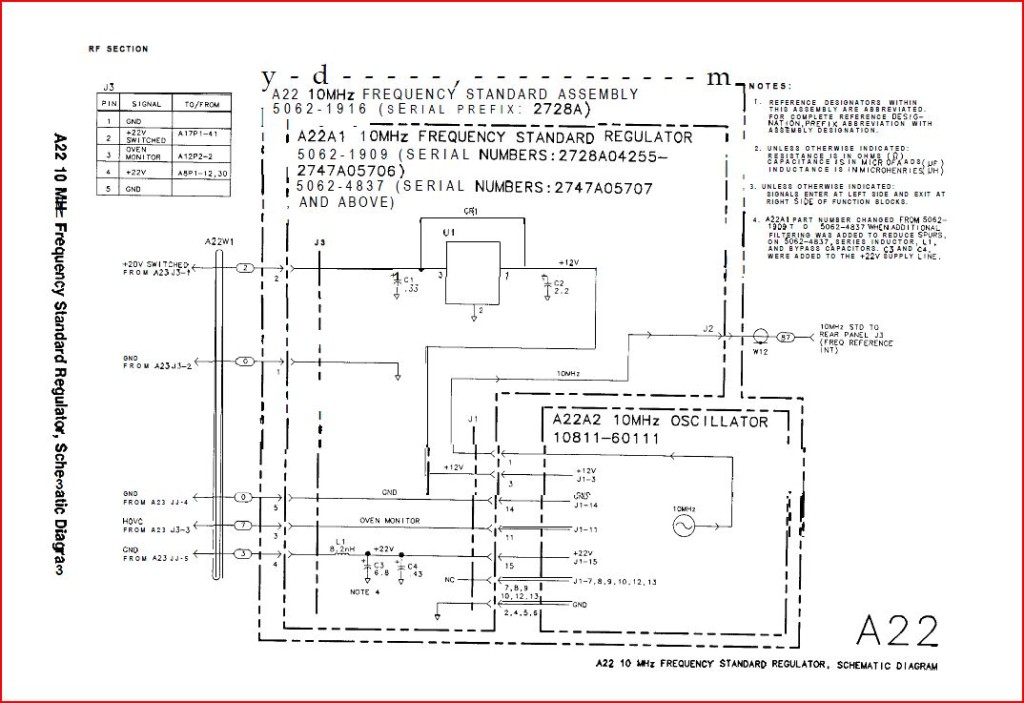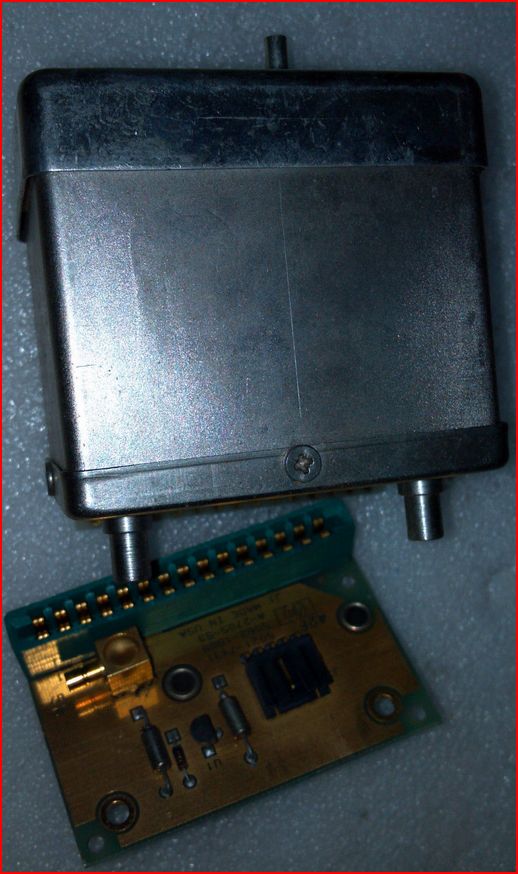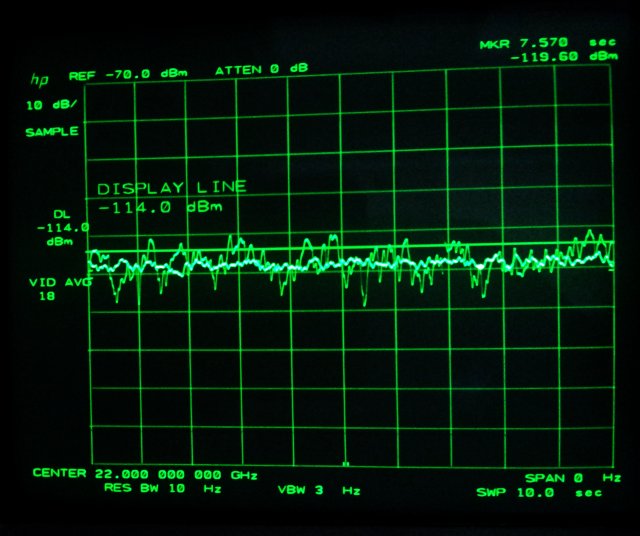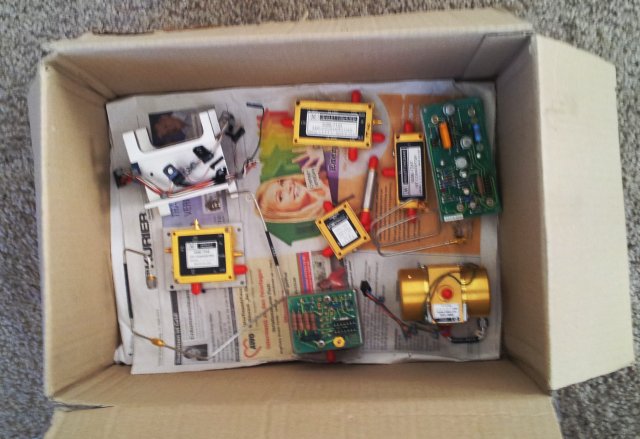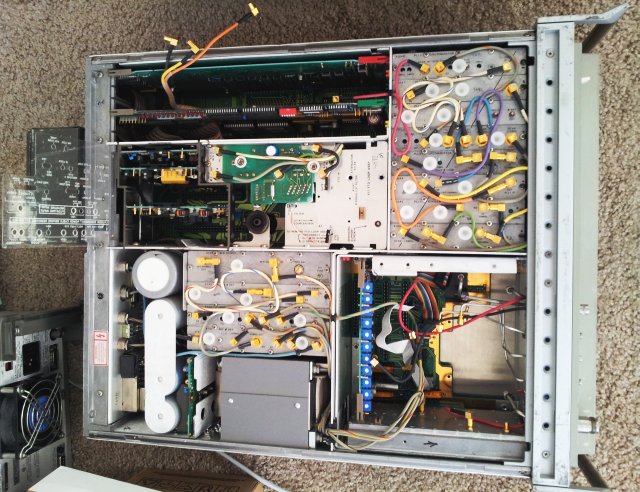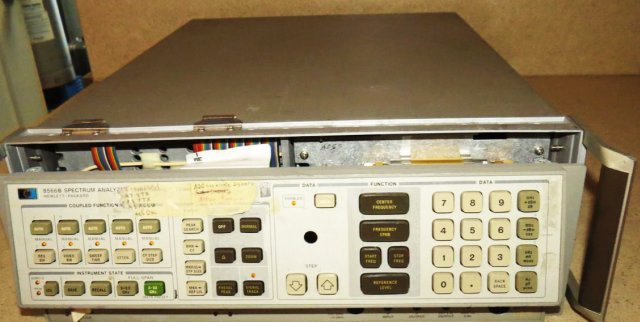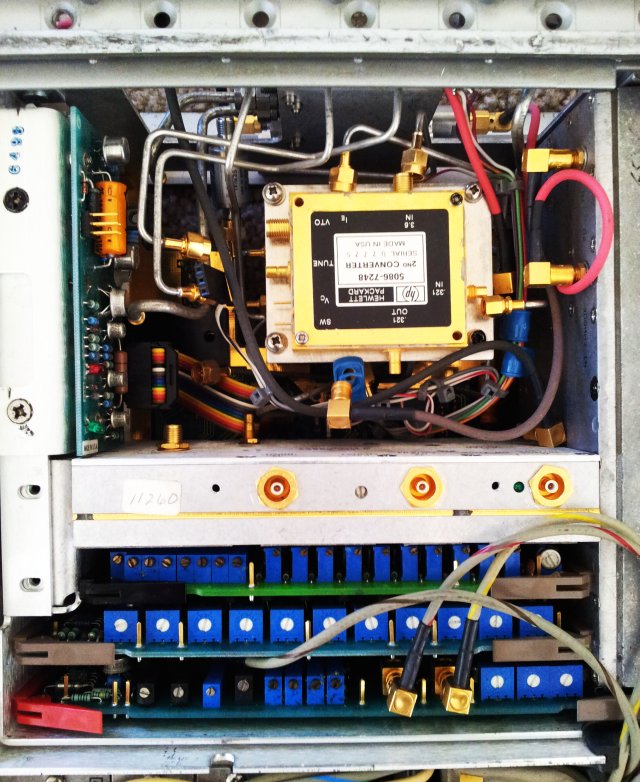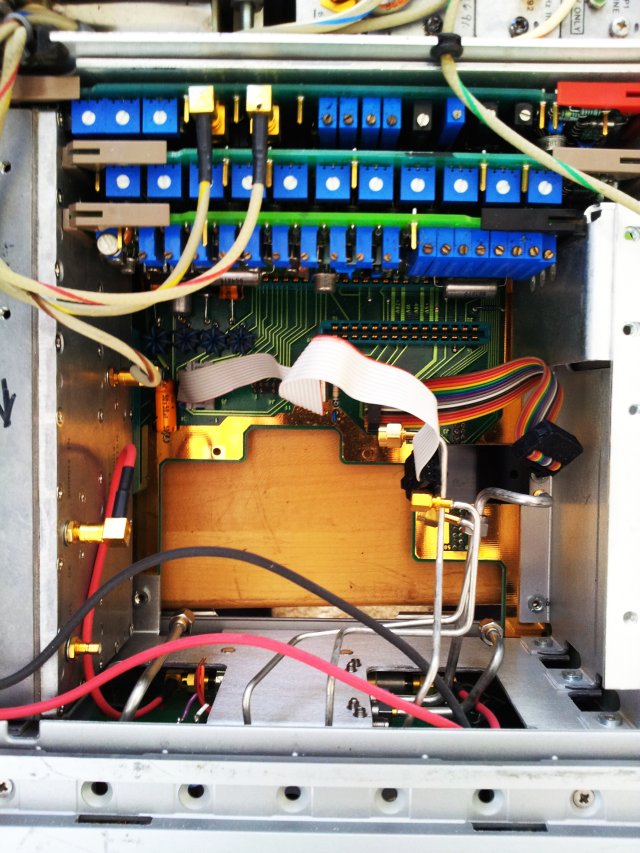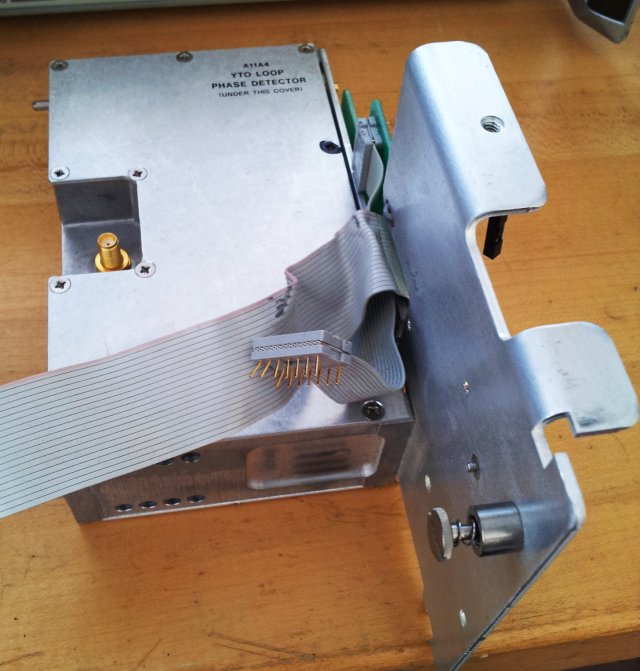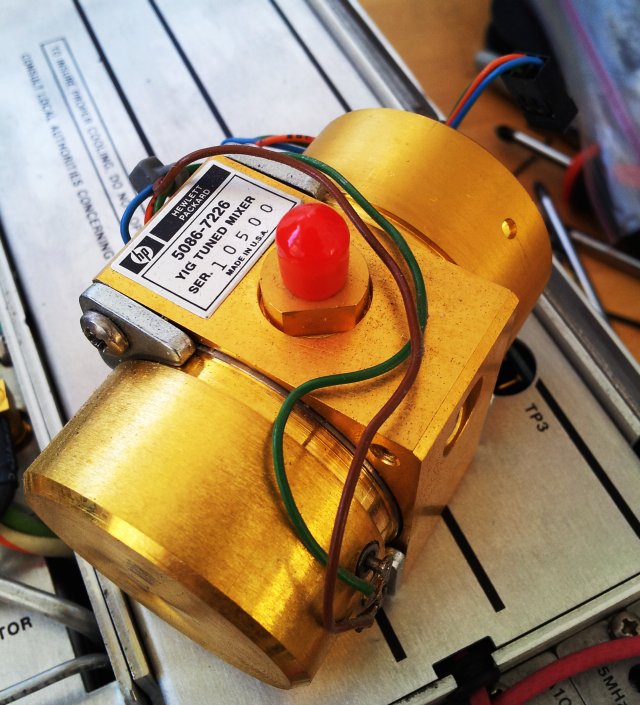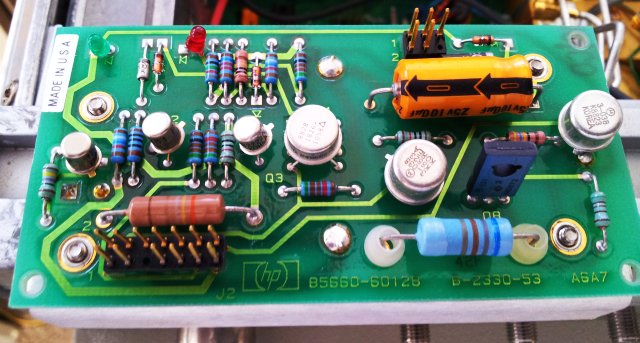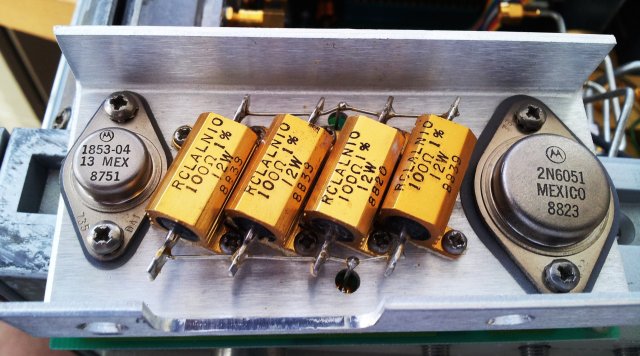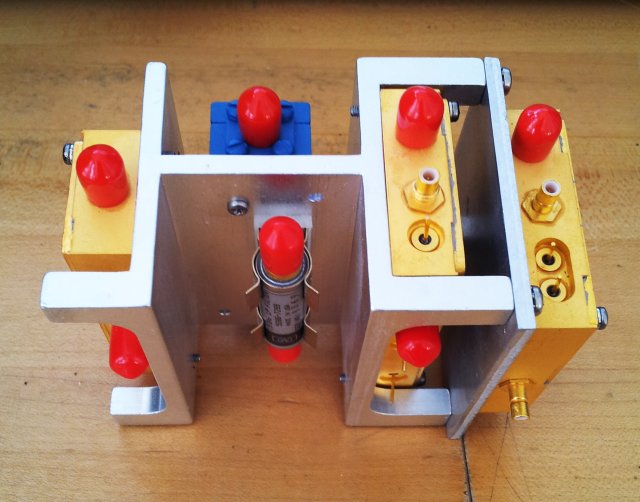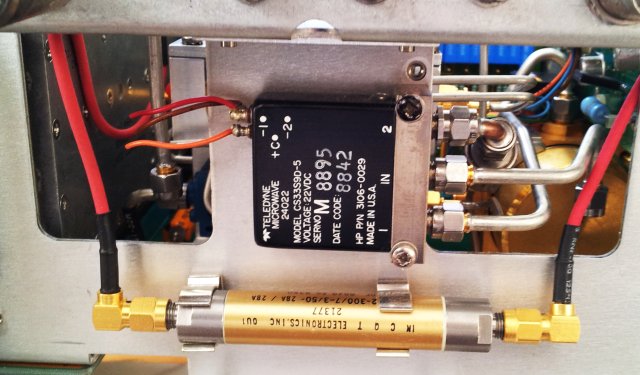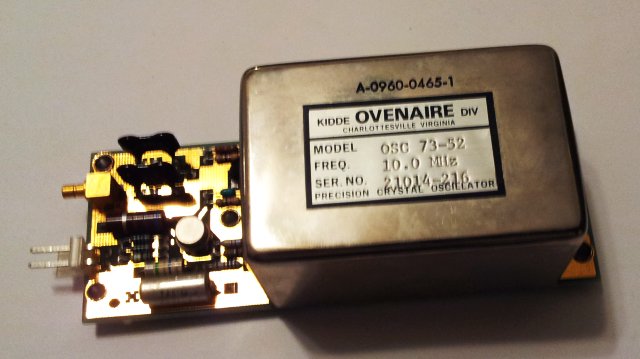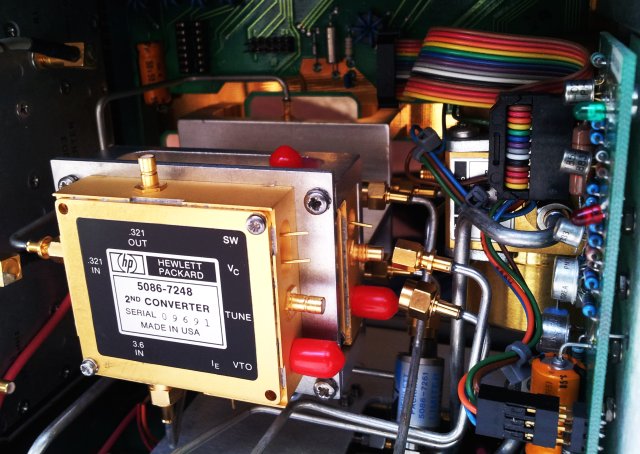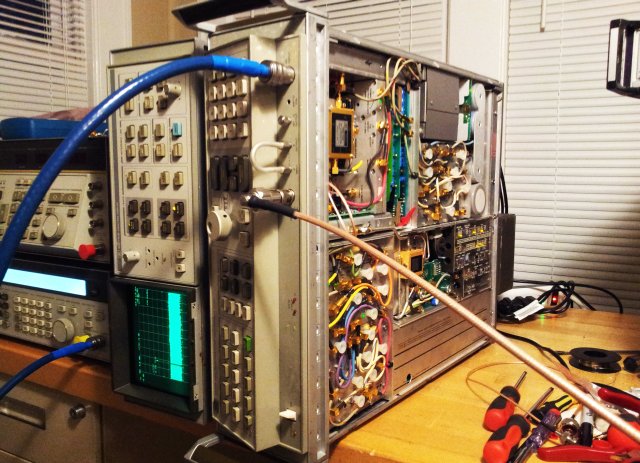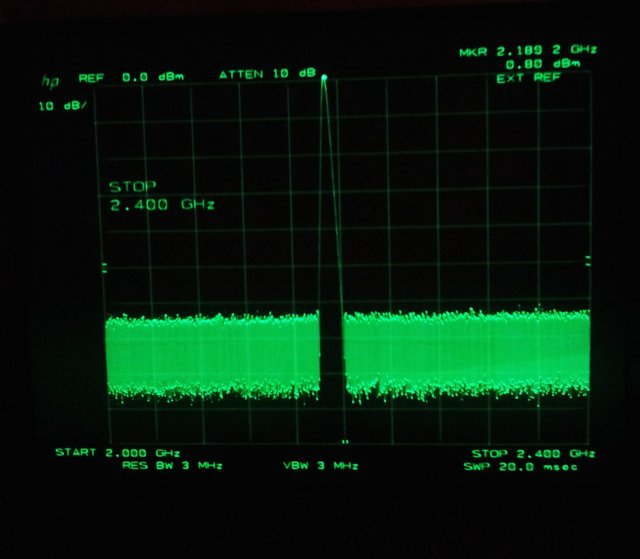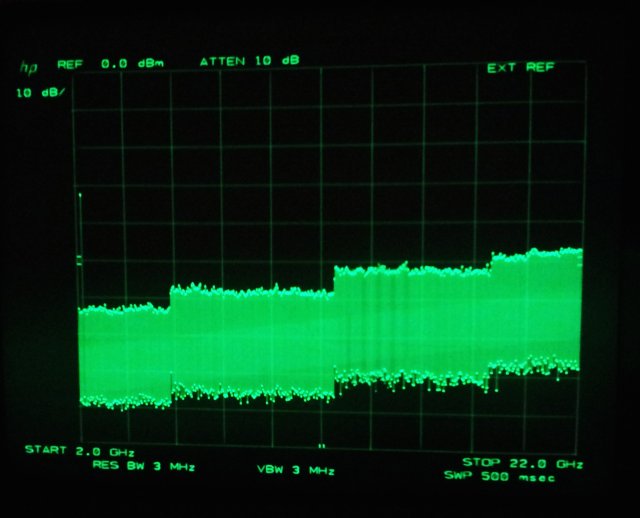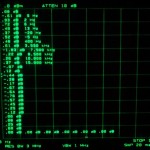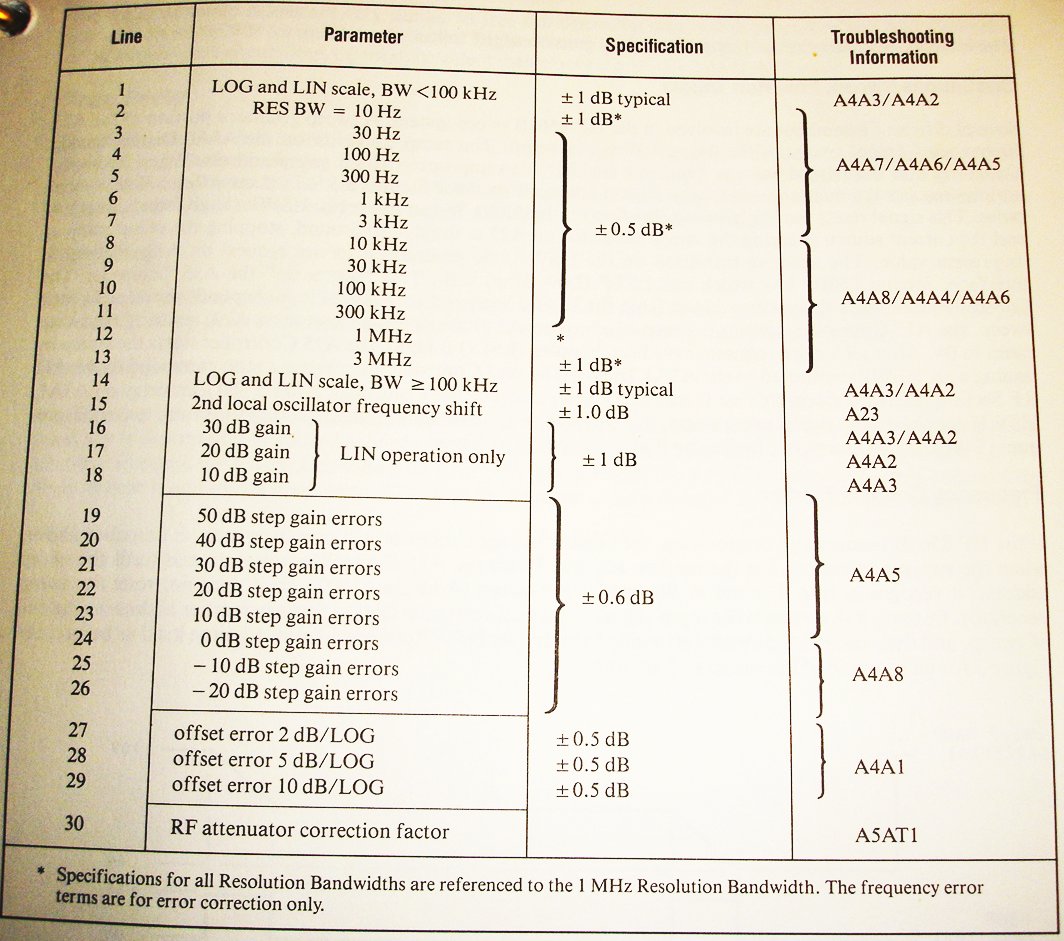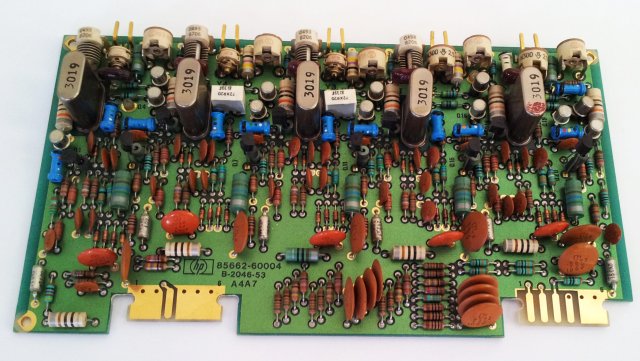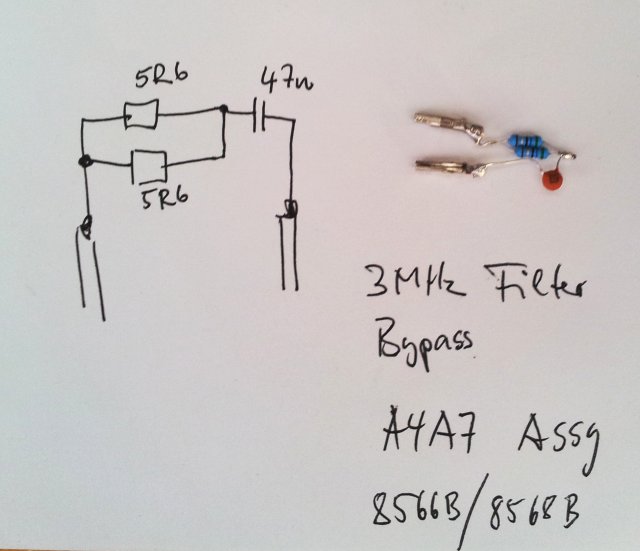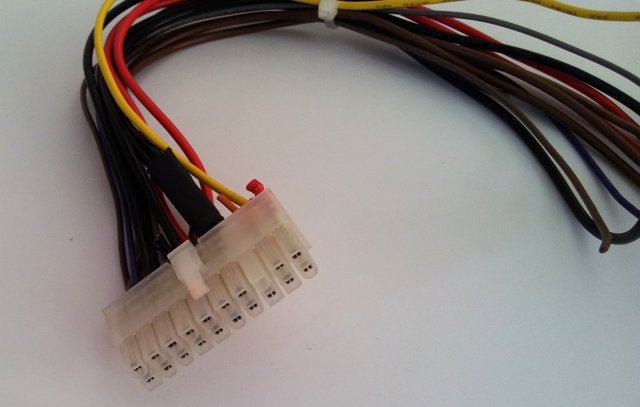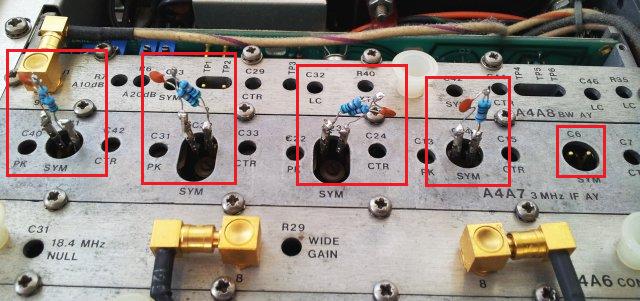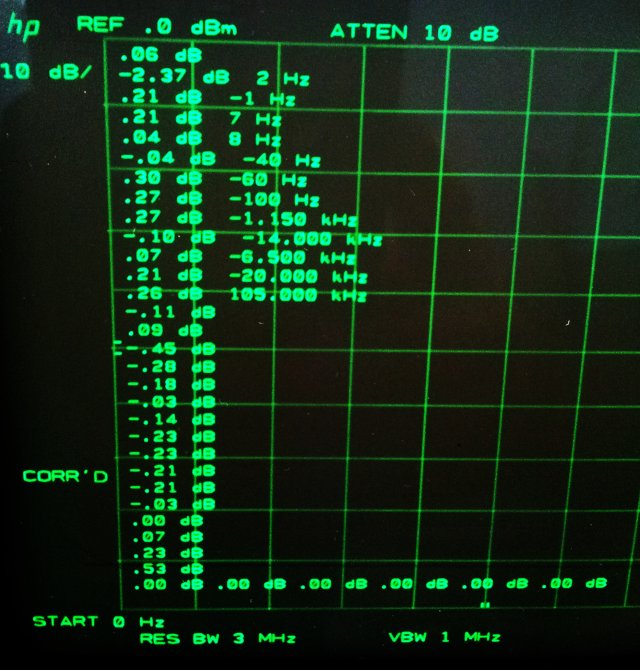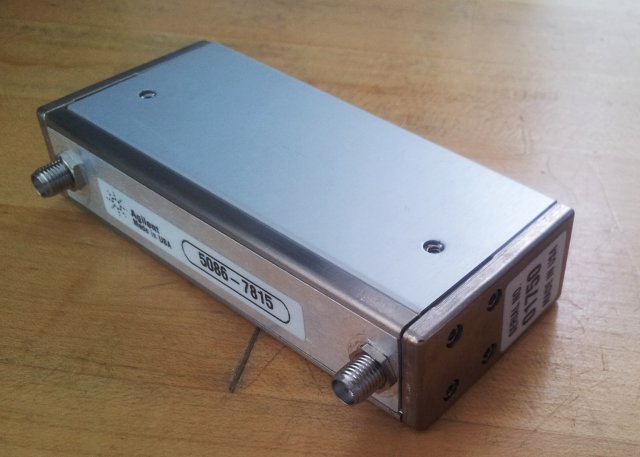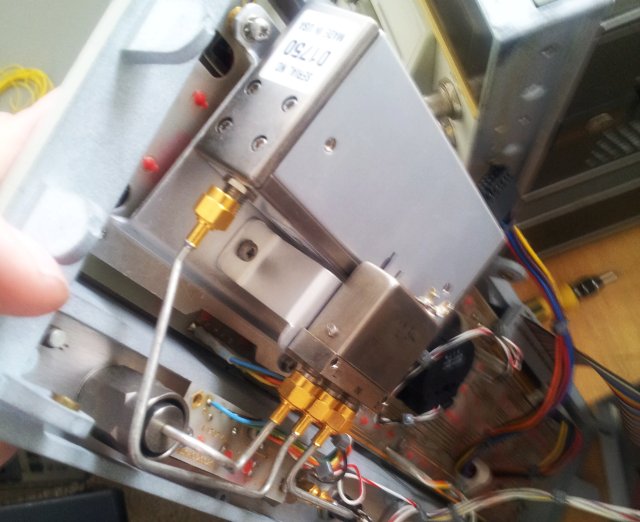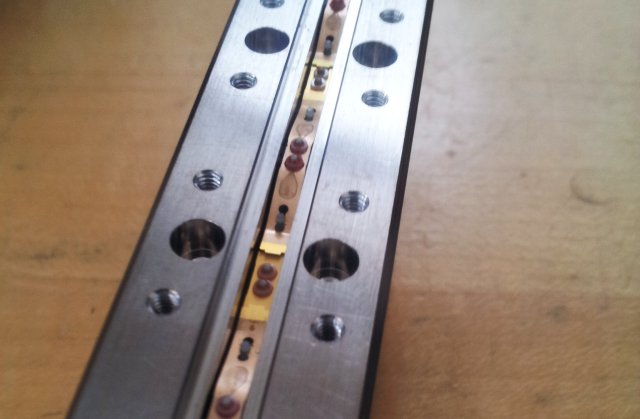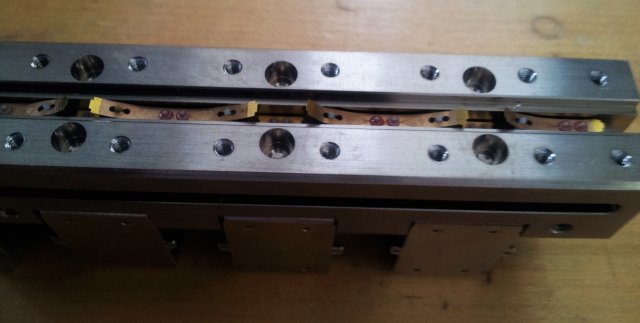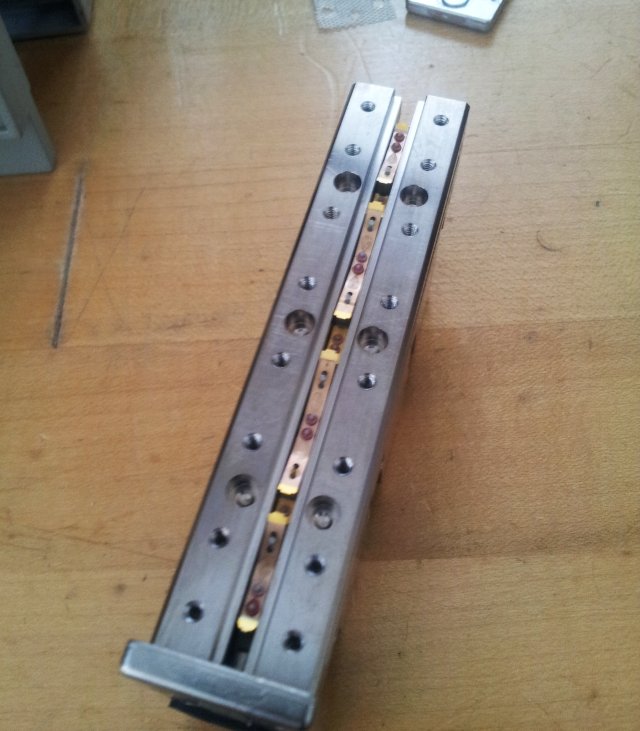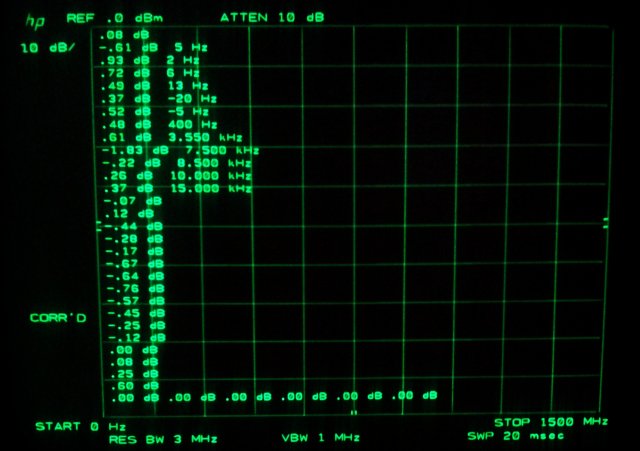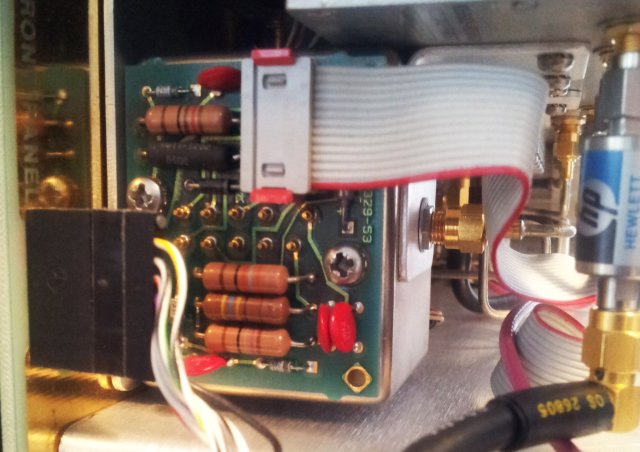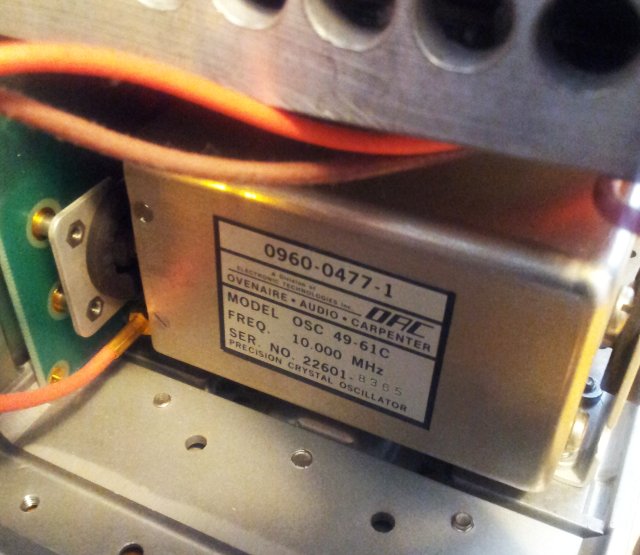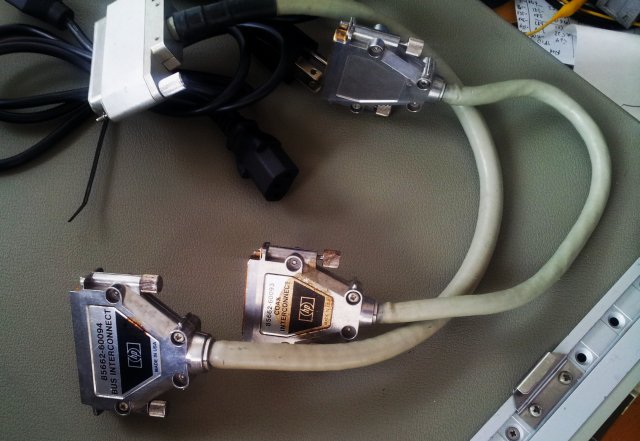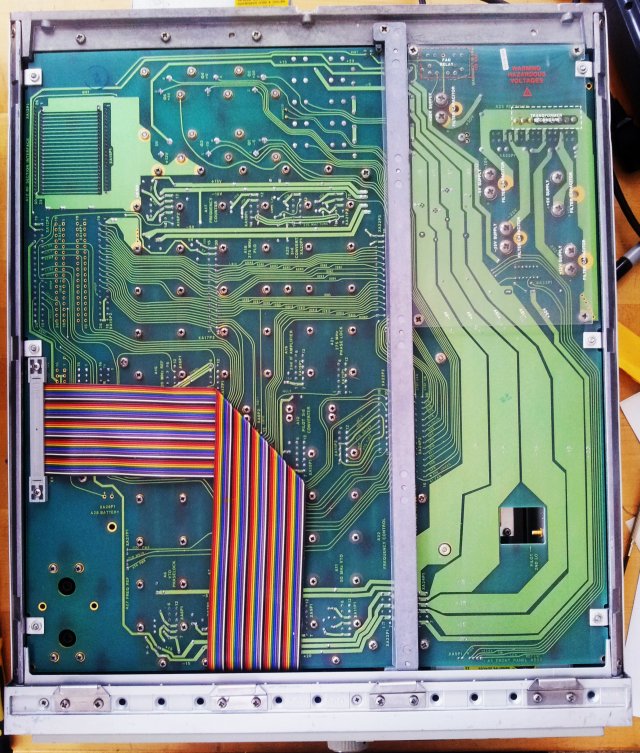The 8566B/8568B analyzer both use the 85662A spectrum analyzer display section, which is not just a display but also takes care of the IF processing. For the 10 Hz to 1 kHz bandwidths, a 5 pole xtal filter is used. A rather delicate assembly that dates back the the earlier analyzers, 8565A, in somewhat modified form. As a side note, HP had a strong tendency to utilized time proven circuits, some of them, over periods of 20 to 30 years… it helps with the repairs, once you get used to a certain assembly, the same pattern is repeating in multiple instruments. One of the examples it the A4A7 assembly of the 85662A (p/n 85662-60004). It is a rather ingenious design, and is critical for the 10 Hz resolution which makes the 8566B/8566B units so useful to resolve close-in spurs, like mains spurs.
The unit currently on my bench showed issues in the 10 Hz bandwidth – not enough gain. First, I assumed it to be an alignment issue, and spent quite a while re-adjusting the circuit. To no avail (well, it helped to improve the passband shape, which is now perfectly symmetrical again).
Almost wanted to give up. But not quite.
Checked the gain of the A4A7 with one of the stages, at a time, bypassed by a substitution circuit, a 47 n capacitor, in series with a 2.8 ohms resistor (see earlier entry). And, quite surprisingly, the gain of the 10 Hz bandwidth increased dramatically when shorting the 5th of the xtal poles.
After careful inspection, notice the peaking cap. It is at its lowest value – this might be the issue – each of the poles has at least 3 adjustments: center, symmetry, peaking, and 2 of the poles, also a gain adjustment…. Maybe, the 5th stage (which is working at all the other bandwidths), is just not set to peak!!
The 68 p capacitor, it is a factory selected component, and 68-82 p is the allowable range. This assembly had a 82 p fitted, but only at the 5th stage… well, just a few pF too much.
Where to get a 68 p cap (a silver mica…) now, one big ocean away from the well-assorted stock back home in the main workshop? Well, always good to have some old, spare HP boards at hand:
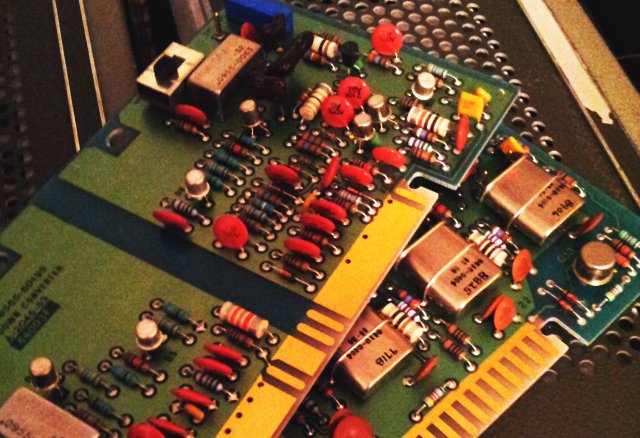
…one of them now is missing a 68 p cap….
After some re-tuning, running the calibration routine, look at the result, before and after:
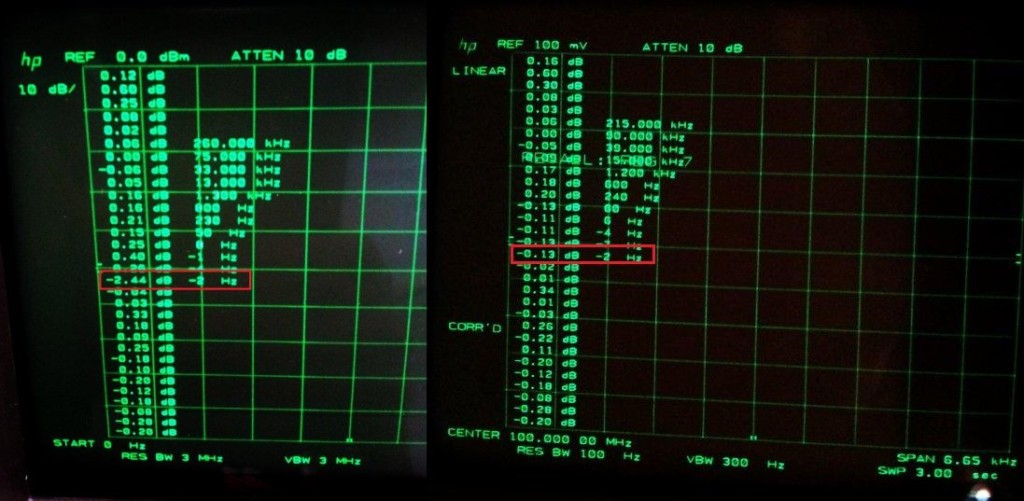
…there are the missing 2 dB. Problem solved!

